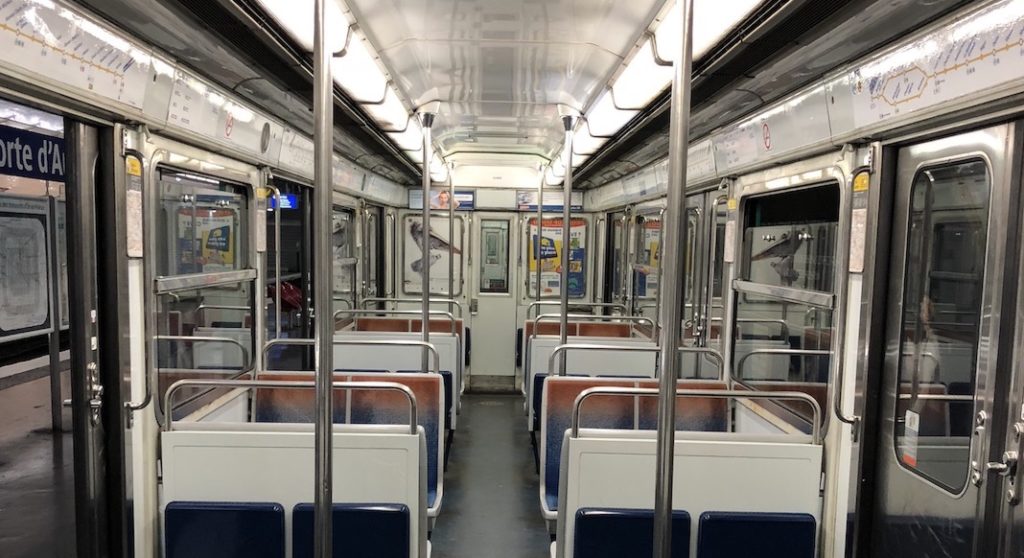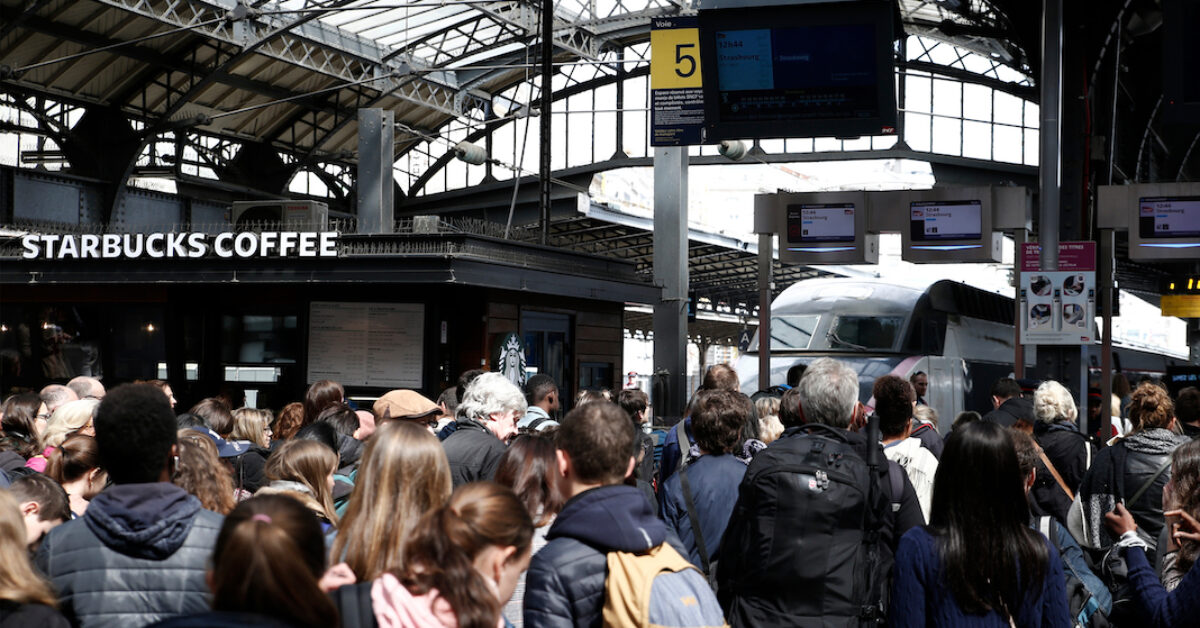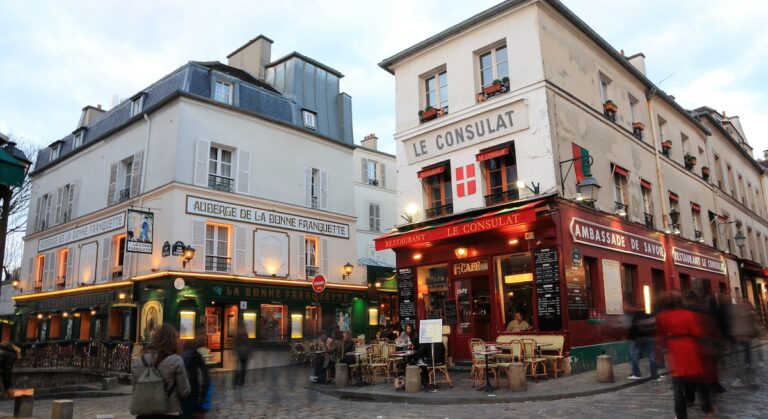Paris’s holiday season just can’t seem to be a happy one. Last year there were the yellow vest protests forcing businesses to shutter their storefronts on key shopping dates. This year there will be “repeatable” strikes by the RATP and SNCF unions, starting on Thursday, December 5, with no end date in sight.
The RATP operates public transportation in the Paris area, which includes the metro, tram, bus, RER, trains to the airports, OrlyBus and RoissyBus. The SNCF operates the country’s national rail system, which includes the TGV, international trains (Eurostar, Thalys, etc.), TER, Intercities, Transilien, and trains from Charles de Gaulle to Paris.
The main RATP unions — CFE-CGE, CGT, FO, Solidaires, Sud, l’Unsa — called for a grève illimité (unlimited strike) back in September, claims that they’re now repeating in press releases and media appearances. Secretary of the Unsa-RATP union Laurent Djebali was forceful in his comments to actu Paris: “starting on December 5, it will be zero metro, zero RER, and a few buses.” When Le Parisien inquired if the unions would be breaking the French law that requires “minimum service,” Djebali responded that he cannot guarantee that there will actually be “zero metro, zero RER,” but promised that there will be at least as many closings as during the strike on September 13, 2019. On that day, 10 lines were closed completely — an unprecedented occurence, — two operated in a limited capacity and two operated normally.

After RATP unions called for strikes, SNCF unions announced that they would also be striking as of December 5.
The strike is motivated by President Emmanuel Macron’s proposed reform to France’s pension system, which would eliminate the special privileges of the rail workers and their pension plans. France currently has 42 different pension systems for various professions, which Macron believes is too complicated and costly. He wants to replace that with one unified pension system.
The “statut des cheminots” (status of rail workers) has been the same for decades. It guarantees lifelong employment (you can only be dismissed in cases of gross negligence), larger social security and pension contributions, and a 35-hour work work guarantee. There’s also an automatic promotion and six percent salary increase every three years, practically unlimited free transit for workers and their families, furnished and subsidized housing for some, and access to doctors and medical centers without upfront payment. Until recently, rail workers could, depending on the difficulty of the conditions of their job, retire as young as 52, though this is not to say that all rail employees retire as early as 52. “A bus driver, for example, retires at the age of 56 on average,” Thierry Babec of the Unsa union told AFP.
Private sector employees in France do not get these benefits. The minimum age of retirement for private sector employees is 62. The discrepancy between the benefits received by rail workers and by private sector employees could be used to explain the lack of support for the rail workers’ protests: according to a Odoxa poll for Le Figaro and France info, a majority of French people are opposed to the strike. Fifty-seven percent believe that it’s “not justified.”
https://www.instagram.com/p/BhHg41Rh9WE/
Also contributing to rail workers’ strife is a law Macron passed with bipartisan support in summer 2018 that changes the SNCF into a national publicly-owned company on January 1, 2020. Politicians hope that making the SNCF a national publicly-owned company will push the agency to find a way to minimize its deficits and control its debt. The changeover will also open the rail line up for competitive bidding in the coming years, in line with European Union regulations. The law also puts an end to two aspects of the “statut des cheminots” on January 1, 2020: new hires won’t be able to retire early and will be hired on permanent contracts under private law instead of for life-long jobs as is the case presently. Current employees of the railways, however, will retain all the benefits currently ensured with the “statut des cheminots.”
In short, rail workers see the upcoming changes on January 1, 2020 as a decrease in job security and the proposed changes to the universal pension plan as a threat to the “statut” (i.e., privileges) they’ve had for decades. To fight back against the changes, rail workers are protesting with “a general sentiment of being fed-up,” according to the secretary general of CGT-Cheminots, Laurent Brun.
This, however, is not Macron’s first time at the rodeo. He faced three months of transit strikes by SNCF workers in spring and summer of 2018, after the reform bill first passed. In the face of transit workers striking two of every five days, he stuck to his guns and the strikes ended with his legislation still in tact.

In preparation of the strikes, the RATP has opened a form on its website for companies operating modes of transportation (personal motorized vehicles, bikes, car-sharing services, carpooling services, etc.) interested in partnering with the agency to offer alternative commuting options. During the September 13 strike, the agencies with which the RATP partnered offered discounts of up to 50% for metro and RER users.
On the government’s side, there is some action it can take to disincentivize striking. The contract between RATP and Ile-de-France Mobilités, the transport organizer, allows for “a minimum service of 50% during peak hours and throughout the network.” During the September 13 strike, when this minimum was not met, the Ile-de-France region said it wouldn’t pay the RATP for the day, resulting in a loss of several million euros for the agency.
Travelers headed to France have to wait and see to find out exactly how their trip will be affected. Disruptions will depend completely on how many people are striking at once, and that number isn’t presently known. The “minimum service” law requires strikers to declare a strike 48 hours in advance, which allows the RATP (and SNCF) to announce its traffic plans at least 24 hours before disruptions begin. It’s best not to count on anything operating well though — for Paris, bring good walking shoes and a willingness to try riding a bike or electric scooter, and for the rest of France you might want to consider renting a car.
Featured image: Stock Photos from Alexandros Michailidis / Shutterstock






